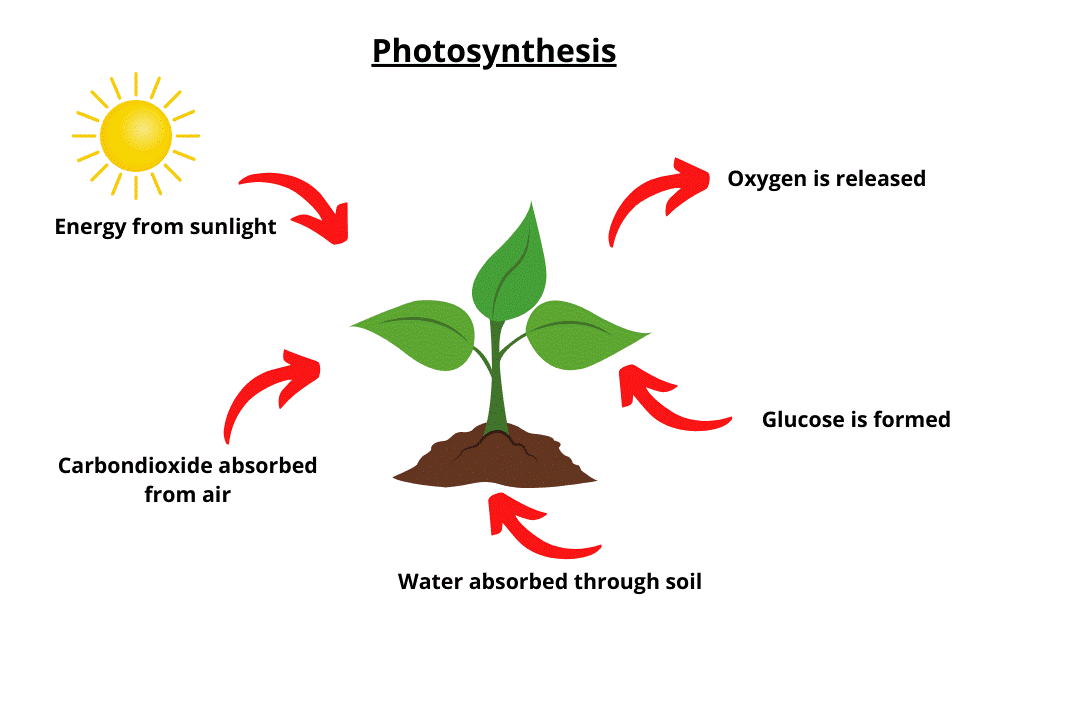Description
 Disclaimer: Copyright infringement not intended.
Disclaimer: Copyright infringement not intended.
Context
- The oldest evidence of photosynthetic structures reported to date has been identified inside a collection of 1.75-billion-year-old microfossils, a paper published in the journal Nature reveals.
- The discovery helps to shed light on the evolution of oxygenic photosynthesis.
Oxygenic Photosynthesis: An Overview
- Oxygenic photosynthesis is the process by which certain organisms, primarily plants, algae, and cyanobacteria, capture light energy and convert it into chemical energy stored in the form of glucose while releasing oxygen as a byproduct.
- This process is crucial for sustaining life on Earth and is responsible for the majority of the oxygen in the atmosphere.
Key Features:
Photosynthetic Organisms:
- Oxygenic photosynthesis is carried out by photoautotrophic organisms, including green plants, algae, and cyanobacteria. These organisms possess specialized cellular structures and pigments that enable them to capture and convert light energy.
Cellular Organelles:
- Chloroplasts are the cellular organelles where oxygenic photosynthesis occurs. These membrane-bound organelles contain chlorophyll, the primary pigment responsible for capturing light energy.
Photosynthetic Pigments:
- Chlorophyll-a and chlorophyll-b are the main pigments involved in oxygenic photosynthesis. These pigments absorb light in the red and blue parts of the electromagnetic spectrum and play a crucial role in capturing photons for the photosynthetic process.
Light-Dependent Reactions:
- The initial phase of oxygenic photosynthesis occurs in the thylakoid membranes of chloroplasts during light-dependent reactions. These reactions involve the absorption of light energy, splitting of water molecules (photolysis), and the generation of ATP (adenosine triphosphate) and NADPH (nicotinamide adenine dinucleotide phosphate).
Photosystems:
- Photosystem II and Photosystem I are protein complexes embedded in the thylakoid membranes. They work sequentially to capture and transfer light energy, ultimately leading to the generation of chemical energy in the form of ATP and NADPH.
Calvin Cycle (Light-Independent Reactions):
- The Calvin cycle takes place in the stroma of chloroplasts and involves the conversion of carbon dioxide into glucose. This light-independent phase utilizes the ATP and NADPH produced during the light-dependent reactions.
Carbon Fixation:
- Ribulose-1,5-bisphosphate carboxylase/oxygenase (Rubisco), an enzyme in the Calvin cycle, facilitates the fixation of carbon dioxide into organic molecules, initiating the synthesis of carbohydrates.
Oxygen Evolution:
- One of the distinctive features of oxygenic photosynthesis is the evolution of molecular oxygen (O2) as a byproduct during light-dependent reactions. This oxygen release is fundamental to the Earth's atmospheric composition.
Role in the Atmosphere:
- The oxygen generated through oxygenic photosynthesis is vital for aerobic respiration in animals and many microorganisms. Additionally, it contributes to the oxygen content of the Earth's atmosphere, creating a life-sustaining environment.
Global Carbon Cycle:
- Oxygenic photosynthesis is a key component of the global carbon cycle, as it sequesters carbon dioxide from the atmosphere, converting it into organic molecules.
Oxygenic photosynthesis is a complex and highly regulated biological process that plays a central role in energy capture and conversion within ecosystems, influencing the composition of the atmosphere and supporting diverse forms of life on Earth.

Photosynthetic Structures
- Photosynthesis is the process by which green plants, algae, and some bacteria convert light energy into chemical energy stored in the form of glucose.
- Various photosynthetic structures are involved in this crucial biological process. Here is a list of photosynthetic structures:
Chloroplasts:
- Chloroplasts are the primary photosynthetic organelles found in the cells of green plants and algae. They contain the green pigment chlorophyll, which captures light energy.
Thylakoid Membranes:
- Within chloroplasts, thylakoid membranes are stacked structures that contain chlorophyll and other pigments. Light-dependent reactions of photosynthesis occur on these membranes.
Stroma:
- The stroma is the fluid-filled space surrounding the thylakoid membranes inside chloroplasts. It is the site for the light-independent reactions (Calvin cycle) of photosynthesis.
Grana:
- Grana are stacks of thylakoid membranes found within chloroplasts. They are involved in the organization of pigments and the capture of light energy during the light-dependent reactions.
Chlorophyll:
- Chlorophyll is the green pigment found in chloroplasts that absorbs light energy during photosynthesis. There are different types of chlorophyll, such as chlorophyll-a and chlorophyll-b.
Carotenoids:
- Carotenoids are accessory pigments found in chloroplasts. They broaden the spectrum of light that can be captured and play a protective role by dissipating excess light energy as heat.
Photosystem I and II:
- Photosystems I and II are protein complexes on the thylakoid membranes that work together to capture and convert light energy into chemical energy during the light-dependent reactions.
Ribulose-1,5-bisphosphate Carboxylase/Oxygenase (Rubisco):
- Rubisco is an enzyme involved in the Calvin cycle, the light-independent reactions of photosynthesis. It facilitates the fixation of carbon dioxide into organic molecules.
Mesophyll Cells:
- Mesophyll cells are specialized plant cells that contain a high density of chloroplasts. They are the primary site of photosynthesis in leaves.
Guard Cells:
- Guard cells, found in plant leaves, regulate the opening and closing of stomata, which control gas exchange (including carbon dioxide intake) during photosynthesis.
Stomata:
- Stomata are small pores on the surface of leaves and stems that allow the exchange of gases, including the intake of carbon dioxide needed for photosynthesis.
These structures collectively contribute to the intricate process of photosynthesis, enabling organisms to convert light energy into chemical energy and sustain life on Earth.
|
PRACTICE QUESTION
Q. In the context of photosynthesis, consider the following statements regarding photosynthetic structures:
Statement 1: Thylakoid membranes are primarily involved in the light-independent reactions of photosynthesis.
Statement 2: Chlorophyll-a and chlorophyll-b are the main pigments responsible for capturing light energy during photosynthesis.
Which of the statements above is/are correct?
A. 1 only
B. 2 only
C. Both 1 and 2
D. Neither 1 nor 2
Choose the correct answer using the codes below:
A. A only
B. B only
C. C only
D. D only
The correct answer is:
B. 2 only
Explanation:
- Statement 1 (Thylakoid membranes are primarily involved in the light-independent reactions of photosynthesis): This statement is incorrect. Thylakoid membranes are primarily involved in the light-dependent reactions of photosynthesis, not the light-independent reactions. The light-dependent reactions take place in the thylakoid membranes, while the light-independent reactions (Calvin cycle) occur in the stroma of chloroplasts.
- Statement 2 (Chlorophyll-a and chlorophyll-b are the main pigments responsible for capturing light energy during photosynthesis): This statement is correct. Chlorophyll-a and chlorophyll-b are the primary pigments involved in capturing light energy during the light-dependent reactions of photosynthesis. These pigments absorb light in the red and blue parts of the electromagnetic spectrum.
Therefore, the correct answer is B. 2 only. Thylakoid membranes are primarily associated with the light-dependent reactions, and chlorophyll-a and chlorophyll-b are the main pigments responsible for capturing light energy.
|





 Disclaimer: Copyright infringement not intended.
Disclaimer: Copyright infringement not intended.




